The Best Vendor Management Systems
Managing compliance, labor, and costs for a contingent workforce is complex, especially in industries like healthcare, education, tech, and staffing. We evaluated and tested the top VMS solutions for features like risk mitigation, talent pool management, and adherence to tax laws and regulations.
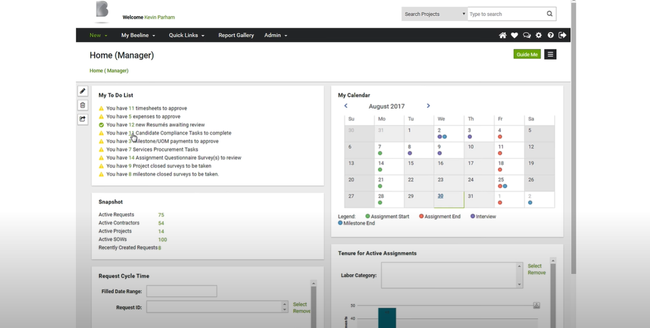
- AI-driven services procurement
- Robust global compliance features
- Extensive partner ecosystem
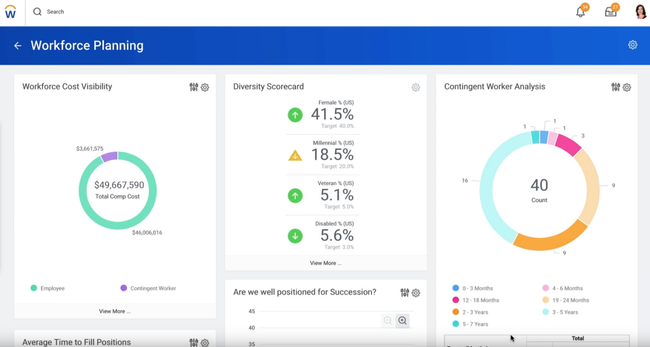
- Available on desktop or mobile devices
- Single unified HCM system
- Offers a variety of performance management tools
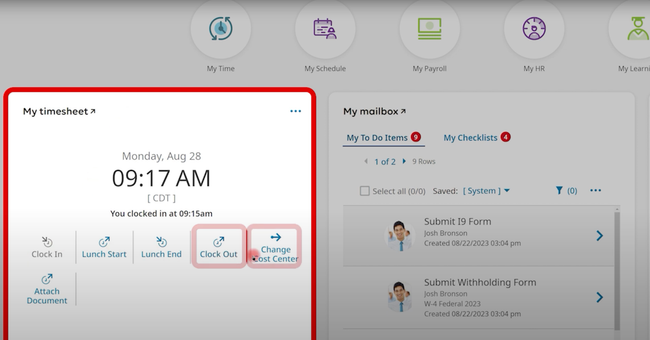
- Human capital management integration
- Tailored modules for adaptability
- Real-time performance insights
Vendor management systems (VMS) are SaaS-based platforms designed to source and manage external labor in growing businesses. After researching and comparing 20+ options, here are our top picks:
- Beeline: Best Overall
- Workday HCM: Best Contractor Hiring Tool
- Workforce Go: Best for Human Capital Management
- SAP Fieldglass: Runner-Up
1 Beeline - Best Overall
Beeline VMS automates non-employee workforce management through a powerful platform, offering core functionalities:
- Visibility: Analyze labor usage and spending on contract and project-based labor
- Compliance: Enforce procurement policies and mitigate co-employment risks
- Quality: Monitor supplier and non-employee workforce performance
- Operational efficiency: Automate procurement cycle steps to reduce time-to-fill
This platform is fairly user-friendly, offering guided experiences, in-application training, and help resources. It also includes strong reporting and predictive analytics capabilities critical for maximizing the value of your investment.
Additionally, Beeline incorporates tax and labor laws, along with regional business practices, and can easily scale to manage various labor categories, including SOW contractors and talent pools.
2 Workday HCM - Best Contractor Hiring Tool
Workday HCM comes with a contractor and contingent workforce management module that makes it easier to handle your temporary staff, from hiring to contract management and termination.
The hiring process is highly structured yet straightforward: just access the worker’s pre-hire account and pick the right hire option from the action menu. From there, the system guides you through essentials like worker type (e.g., contractor or consultant), job location, contract start and end dates, pay rates, and payout terms. This step-by-step approach makes it easy to set clear expectations for both parties from the jump, reducing the chances of renegotiating terms later on and ensuring compliance.
Each contractor goes through a quick approval workflow you can customize to fit your business’s hierarchy. This ensures all the right managers and stakeholders sign off, preventing any accidental hires. Once a contract is approved, the system automatically notifies the hiring manager and contractor through built-in communication channels, like Workday Inbox and real-time alerts. It then logs any updates, like extending or ending a contract, automatically in the worker’s profile, ensuring there’s a reliable audit trail if any disputes or compliance checks arise.
Unlike standalone VMS tools like SAP FieldGlass or Beeline, Workday HCM ties right into its broader human capital management and financial management suite. This is useful if you need to manage both contingent and full-time employees in one place. It gives you a clearer view of all workforce data and improves strategic planning and budgeting.
For companies with 500 to over 5,000 employees and annual revenue from $50 million to $5 billion, Workday HCM is a reliable choice for handling complex workforce needs efficiently.
3 Workforce Go - Best for Human Capital Management
Workforce Go! is primarily a human capital management system but is adept at enhancing vendor relationships for a number of reasons:
- Streamlines processes: Eliminates tedious manual tasks with automation and consolidates functions into a single platform
- Seamless integrations: Compatible with popular accounting software like Sage Intacct and maintains synchronized and error-free data
- Customizable solutions: Offers modules tailored for payroll, HR, and timekeeping and adapts to your unique business requirements
- Compliance management: Stays current with evolving labor laws and ensures regulatory adherence
- Comprehensive reporting: Enables data-driven decision-making and provides real-time insights on vendor performance
- Strong support: Provides assistance when needed and a focus on growing your business instead of troubleshooting
Workforce Go! is built for organizations of all sizes seeking a cloud-based software for managing human resources, payroll, and timekeeping.
4 SAP Fieldglass - Runner-Up
SAP Fieldglass offers collaborative digital workspace solutions for managing external workforces. Key benefits include:
- Quickly finding and adding necessary external resources and skills
- Actively working engagements to ensure value
- Staying ahead of labor regulations and security requirements using intelligent automation
- Integrating with various enterprise and self-developed applications through an open platform
- Leveraging in-depth analytics, mobile apps, and self-service configuration for maximum value
The SAP Fieldglass portfolio provides applications and tools for various worker types:
- Contingent Workforce Management: Find, engage, and manage temporary workers and freelancers, ensuring compliance with global labor regulations and secure data access.
- Services Procurement: Add and manage contractors, freelancers, and service workers while gaining visibility and control over costs and minimizing risk.
- Worker Profile Management: Manage nonpayroll workers not tied to a job posting or statement of work.
- Assignment Management: Deploy, maintain, and pay service providers in asset-intensive businesses, ensuring proper work completion and accurate compensation.
Overall, SAP Fieldglass delivers a versatile resource for managing external workforces.
What is a Vendor Management System?
Vendor management systems (VMS), also known as contingent workforce management software, are staffing tools for sourcing external labor. They are a SaaS online solution for managing your temporary or permanent workforce in expanding companies. With a VMS, your business can bring in outside talent to fulfill specialized roles and configure workflow to fit your needs.
While VMS has some overlaps with procurement, human capital management (HCM), and human resource software, as all are designed to improve labor management practices, vendor systems are primarily for the management of contingent or contract workers. HR software solutions alone do not cover all the intricacies necessary to source and hire external labor correctly.
Note: The term “vendor management” is sometimes used interchangeably to refer to supplier relationship management (SRM) solutions. If you are looking for software to handle your supplier management and vendor communications along a multi-echelon supply chain, please review our SRM software options.

Key Features
- Non-employee labor management: Streamline onboarding, training, and other labor issues for members of your seasonal, temporary, or contingent workforce
- Candidate tracking: When interviewing multiple applicants, track all of their relevant information and keep records of contracts
- Contract generation: Create standardized templates for your external labor job contracts
- Talent analytics: Measure performance from all of your contingent employees
- Job listing generation: Make accurate job listings for staffing agencies and vendors to reflect unfilled positions
- Timesheet management: Stay ahead of staff scheduling and attendance requirements for your external workforce and avoid conflicting schedules with your internal employees
- Compliance management: Check you meet all the labor standards of different locales, depending on where your external labor is located
- Third-party payroll integration: Ensure timely payment for all your contracted workforce
- Staffing agency communication: Stay in contact with staffing agencies to source new labor whenever you need it
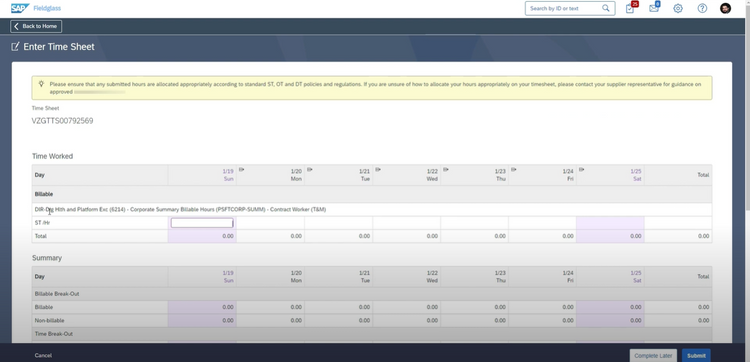
Benefits
There are several benefits to introducing a VMS to your business’s vendor relationships:
Procure Qualified Labor
One of the biggest hurdles companies face when sourcing external labor is knowing who is a good candidate. With a VMS procurement solution, you can create highly specific job orders to ensure vendors and staffing agencies only send you qualified candidates.
Candidate tracking tools let you review and compare all applicants online. It’s easier than ever to figure out which applicant is best suited for your job order. Customizable questionnaires can save time by testing potential employee skills during the application process. This can improve your risk assessment for projects by ensuring you are hiring from a VMS-approved talent pool.
Fill Positions Faster
Your business cannot operate without your external labor force. Yet the time it takes to interview candidates and measure vendor performance can add up, costing your company time. Managing the hiring process yourself can make your workload overwhelming. VMS lets you fill positions faster by automating the process by providing vendor information within a centralized repository so you can find ideal candidates in a flash.
Seasonal positions, in particular, need to be filled in a timely manner. As a web-based solution, VMW lets applicants and agencies apply online. Review and respond to applicants with ease without having to sort through piles of physical resumes and cover letters.
Meet Local, National, and International Labor Compliance
Another hassle of working with contingent employees? Your external workforce might be located in another state or country. You have to know and follow all local labor laws and regulations. User-friendly VMS software helps you stay compliant by providing a single location to store all necessary hiring and onboarding documentation.
Even if your workers are in the same office, VMS provides risk management by keeping your business processes compliant when you work with contracted labor.
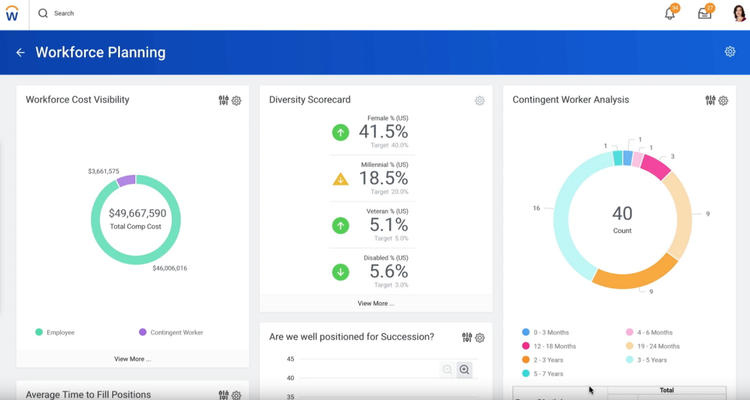
Workforce Performance Metrics
Once you have your external labor, you need to know you’re getting the best value from your workforce. Vendor management solution applications measure and analyze the real-time performance of your freelance and contract workers.
This aspect of VMS modules gives you greater security when hiring. You can rest easy when reviewing applicants by checking their past performance. You get due diligence without having to perform your own background checks on each candidate. And when temporary workers do well, you can keep their contact information to build up your talent pool.
Online Approval Processes
Web-based VMS applications let you access your external labor information anywhere. Need to finish up applicant approval when out of the office? No worries! Streamline your business processes by using mobile applications to check applications and provide approval remotely.
VMS contract management tools even let you send boilerplate contracts to approved candidates. You can also review invoices from your contingent labor vendors to ensure accuracy with billed services.
Lower Labor Costs
The more external employees you have, the more hoops you have to jump through with contracts, scheduling, and payroll. By using a VMS to manage your contingent labor, you can keep payroll costs down. Your HR department can stay focused on your internal employees while the VMS handles the needs of your contingent talent.
Types of Contingent Workers
There are many different types of contingent workers your business may work with. VMS solutions help your business manage contingent workers, including:
- Temporary contract workers (temps): Workers provided by staffing agencies for limited work contracts at other businesses. Temps are often used to cover for full- or -part-time employees who will be undergoing an extended absence for any reason, such as parental, bereavement, or sick leave.
- Freelancers: An entirely independent, self-employed worker who generally works in creative fields, including music composition and performance, writing, translating, acting, computer programming, and graphic or web design.
- Contractors or subcontractors: Trade employees, often in construction and maintenance, who may work independently or as part of an organization.
- Consultants: A professional who is independent or part of an agency temporarily works with a company to provide valuable insights to improve business performance.
- Independent professionals: Any other self-employed worker who may have a specific skill set they hire out.
VMS helps you manage your external workforce for as long as you need them. For example, maybe you need a temp for six months to replace an office employee on maternity leave. You also need a certified consultant for a one-time safety seminar. Despite the different timescales of employment, a single VMS covers both long- and short-term contracts.
Healthcare VMS Software
Of course, some industries depend on temporary and third-party workers more than others. The healthcare industry heavily relies on a contingent workforce to staff clinical and non-clinical positions. Since healthcare workers need to meet strict compliance standards set by government organizations and the facility itself, finding qualified candidates can be difficult. Healthcare-specific VMS software is designed to record all external labor certifications from applicants so you can easily select the best candidates for your medical facility.

Pricing Details
How much you spend on your vendor management system will depend on what you’re looking for and your ideal budget. VMS software pricing is first determined by whether you want a continual, subscription-based plan or a one-time perpetual license. Monthly SaaS prices range from $5 per month per user up to $1,990 per month. This subscription cost often includes technical support, training, and initial installation fees.
Most subscriptions are also priced per user, though some plans allow for a set amount of users. This is particularly popular with tiered pricing plans. Custom pricing is often available for larger companies or those with specific hiring standards.





















